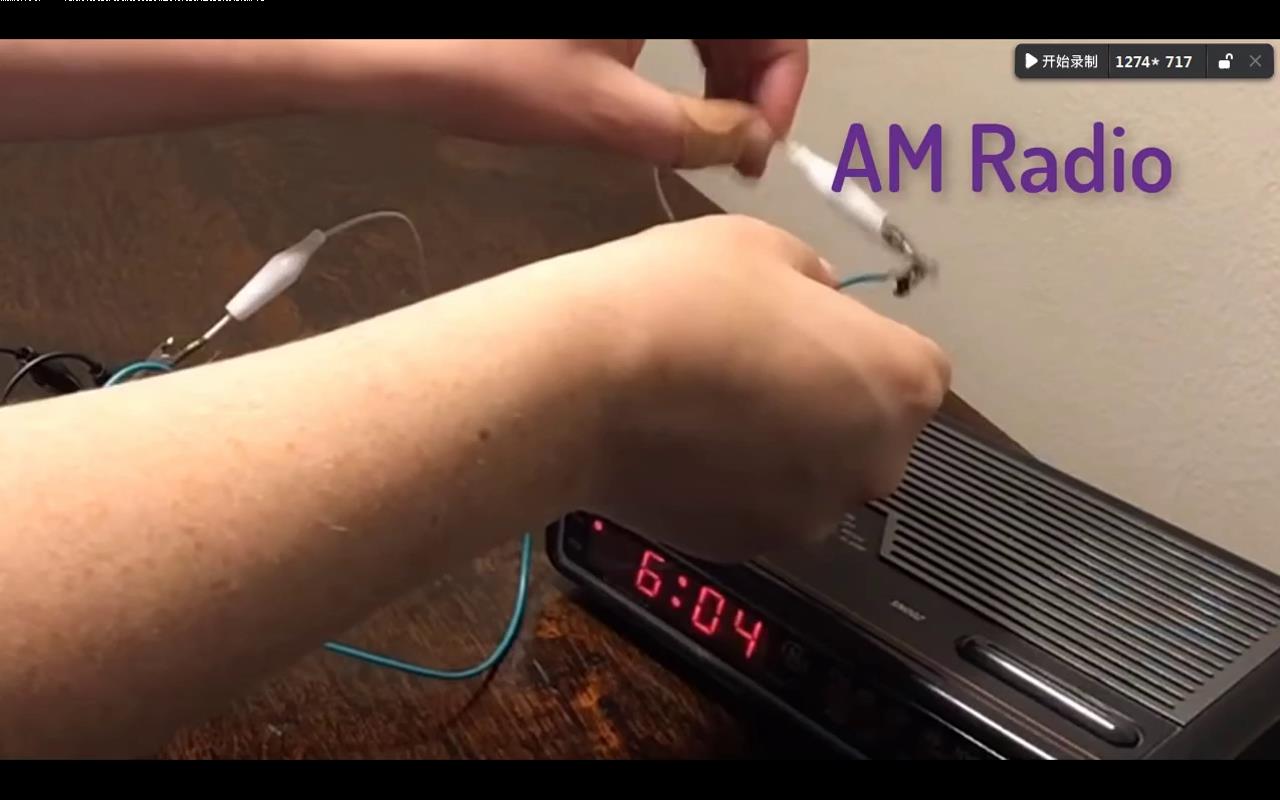调频广播如何发明的?
Posted 卓晴
tags:
篇首语:本文由小常识网(cha138.com)小编为大家整理,主要介绍了调频广播如何发明的?相关的知识,希望对你有一定的参考价值。
调频广播如何发明的?
01 FM无线广播
一、前言
调频FM 收音机进一步改善了我们交流的方式。 根据霍华德·阿姆斯特朗的对手戴维·萨尔诺夫的说法,调频广播是“一场革命”。 很多关于这段历史的书籍、视频和文章的内容更多的聚焦在他们两人之间的争斗,但大都对调频广播的科学原理一带而过。 让我们听 Kathy 老师准确生动、简洁明了的介绍霍华德·阿姆斯特朗最初是如何发明 FM 收音机的, 以及这项惊人的发明又是如何导致他的悲惨命运的。

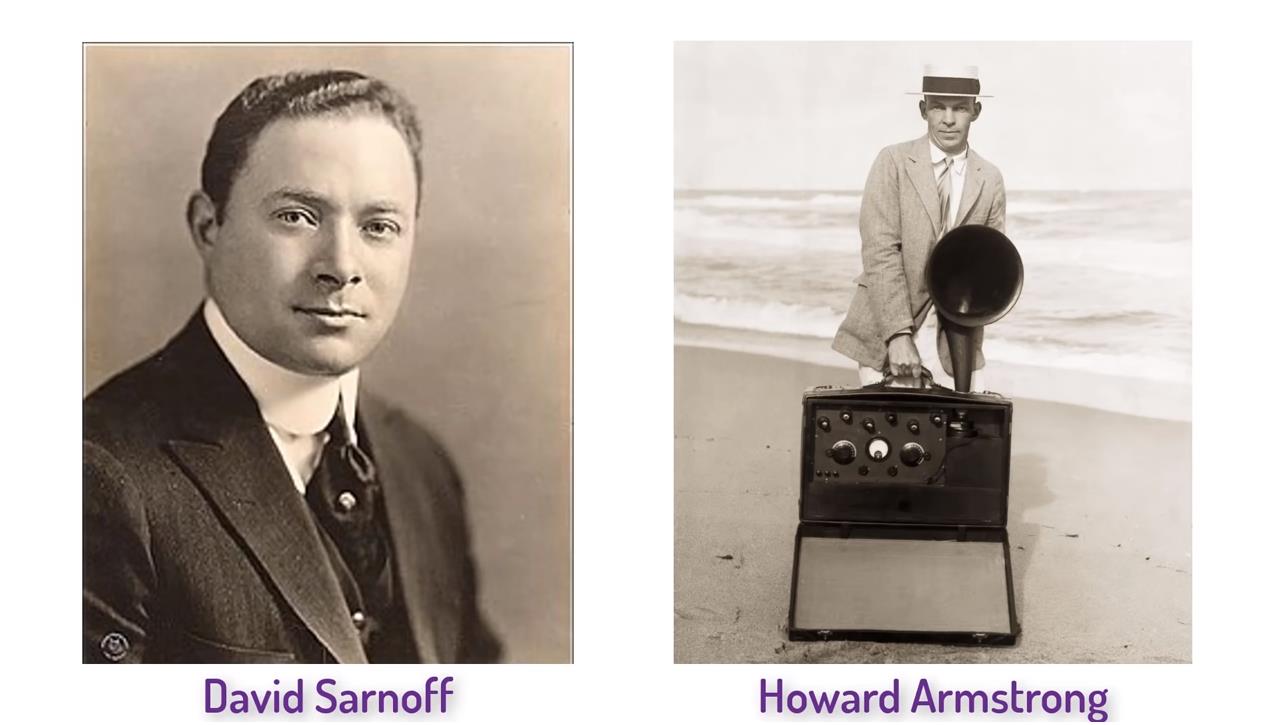
▲ 图1.1.1 戴维·萨尔诺夫与霍华德·阿姆斯特朗
二、从调幅到调频
1923 年,Howard Armstrong 与他的朋友、时任 RCA 副总裁的 David Sarnoff 合作制造了 Radiola 收音机, 很快 Armstrong 和 Sarnoff 赚了数百万美元。 广播电台迅速普及,改变了社会文化的各个方面。 但还存在一个烦人的问题,那就是杂波干扰,它与 AM 收音机的性质有关。
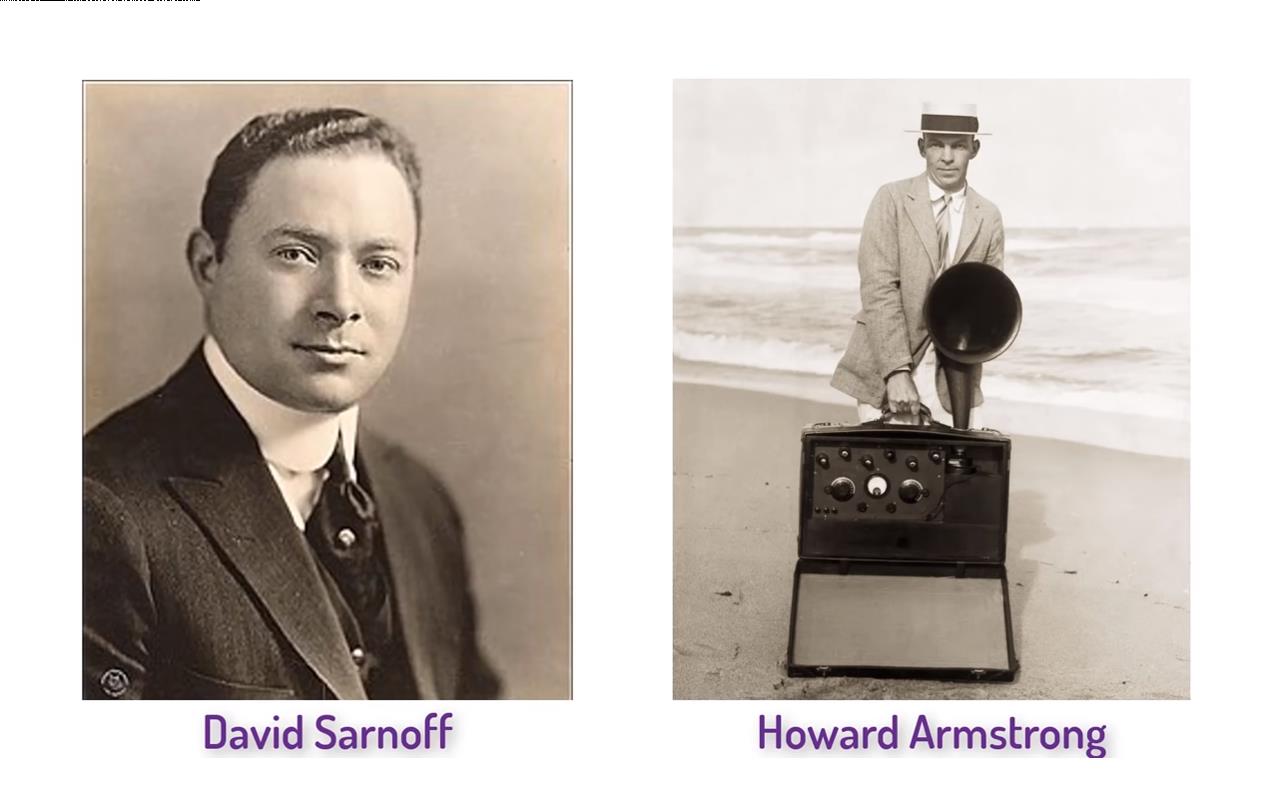
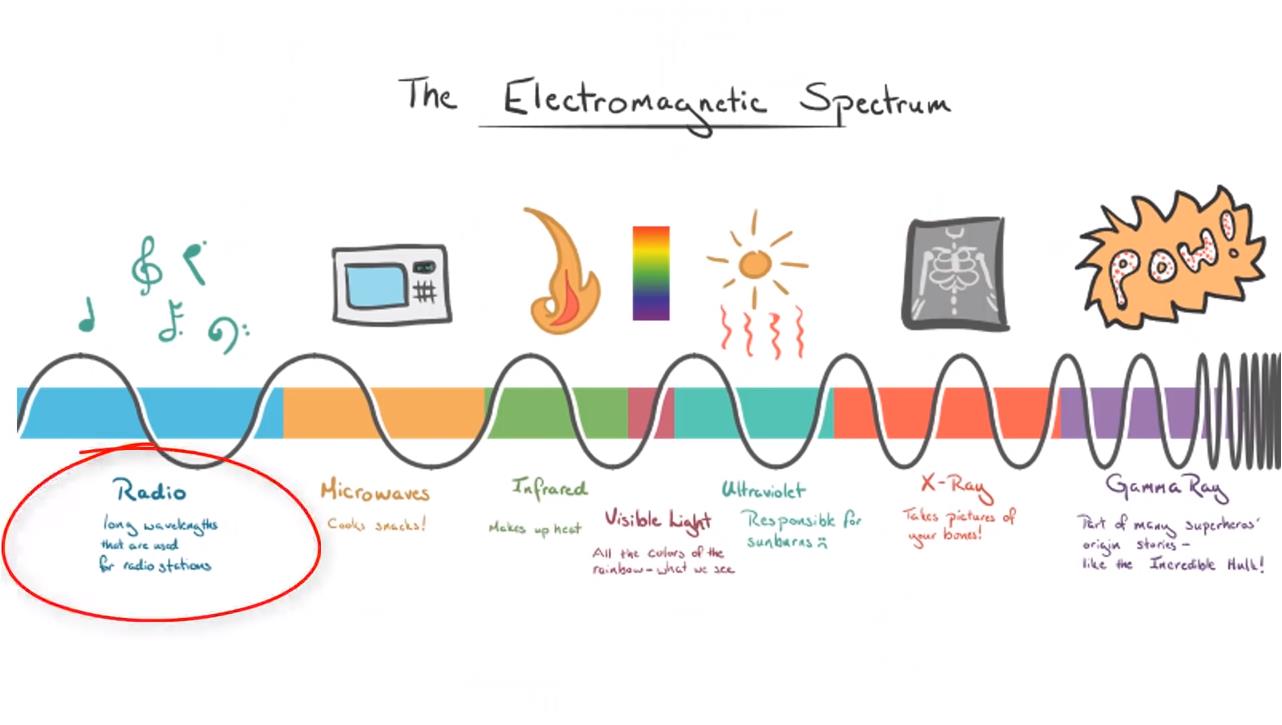
▲ 图1.2.1 无线广播中的电磁波
先了解一下调幅广播的基础知识。 无线电波不是声波, 对吧? 它们实际上是不可见的光波。 无线电波被用作传输或携带声音信息的媒介, 也称为载波,即装载信息的无线电波。 在 AM 收音机中,声音被转换成电信号,该信号用于改变载波的振幅。 因此,调幅收音机的名称为 AM 收音机。 电火花、闪电等都会产生无线电波,从而叠加在电磁波上,从而在 AM 收音机中产生杂波干扰。
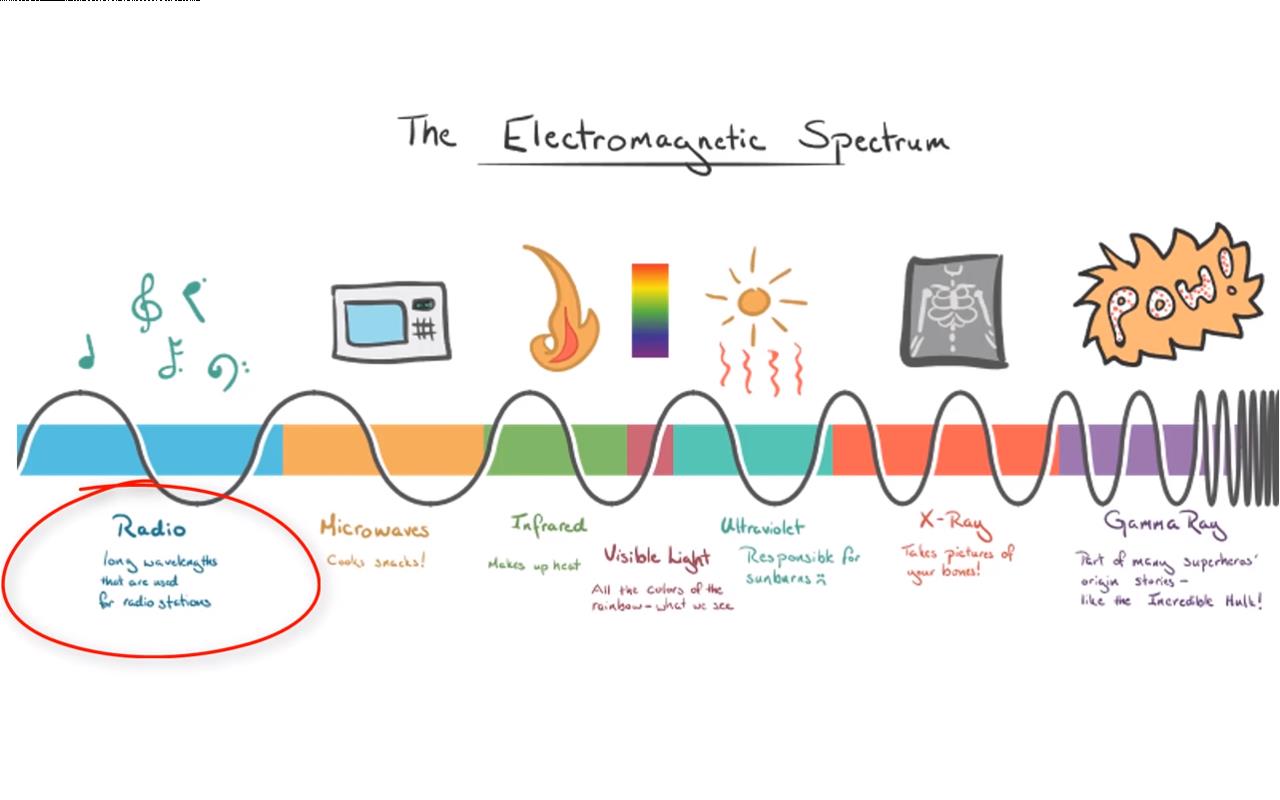
下面演示一下调幅收音机的杂波干扰。
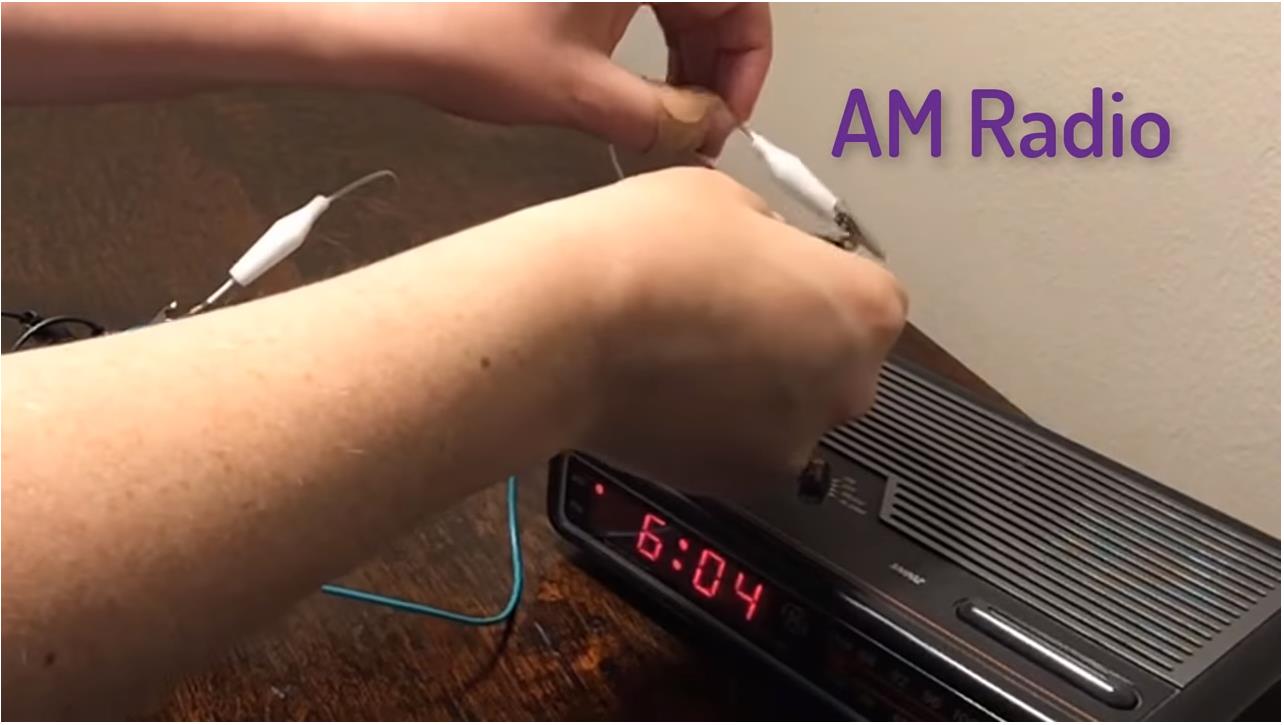
▲ 图1.2.2 调幅收音机被附近电火花干扰
Sarnoff 曾多次表示,他希望有一个小黑匣子来消除杂波干扰。 Armstrong 认为他有解决方法。 为什么不创建一个无线电波,其中频率偏离原始频率,频偏的大小对应于麦克风中产生的声波幅度, 而不在利用电波的幅值来代表声音信号的强度。 因此这种收音机被称为调频收音机。

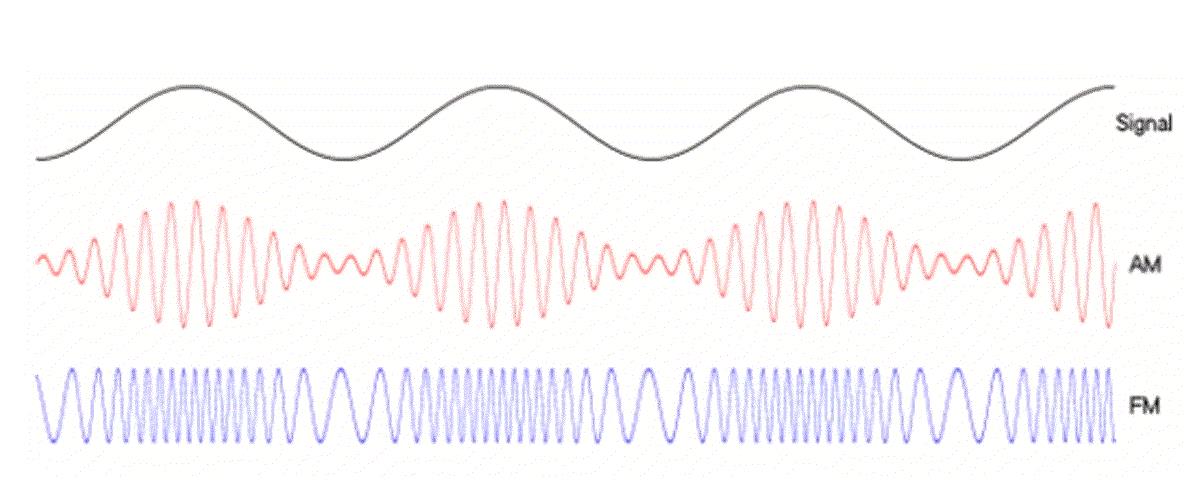
▲ 图1.2.3 两种种不同的信号调制方式
实际上,许多科学家在二十世纪初期就对频率调制很感兴趣。 然而,在 1922 年,贝尔实验室的首席数学理论家约翰·卡森 (John Carson) 写了一篇论文,认为它行不通。 更准确地说,它会起作用,但它本质上会对信号产生失真,所以调频没有任何优势。 卡森最终得出的结论是,“广播中的杂波干扰,就像贫困一样永远与我们同在”。
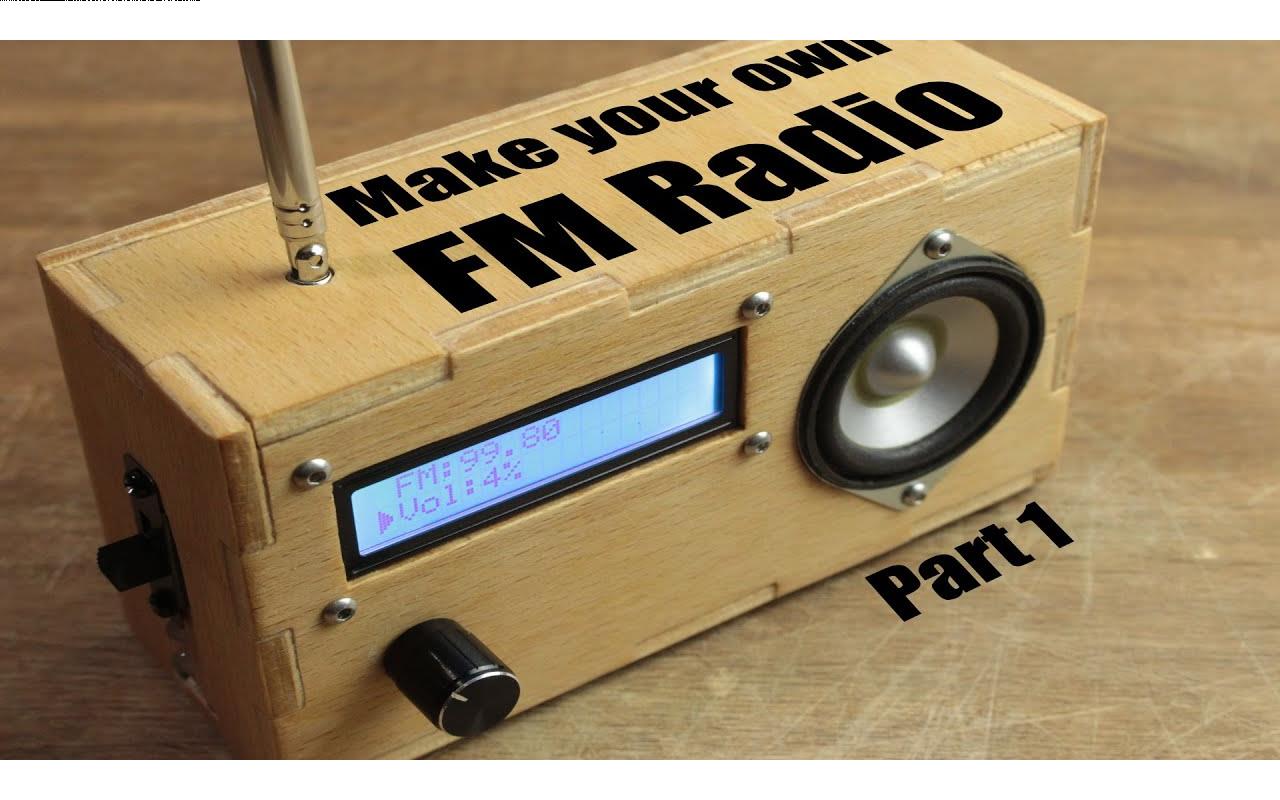
对于卡森的判断,阿姆斯特朗根本不服,他说: “对于这种完全基于数学得出的结论我嗤之以鼻。 1928 年,霍华德·阿姆斯特朗决定将所有时间都花在制作 FM 收音机上。 三年了,他一无所获。 然后他有了一个激进的想法。 他知道为了实现 FM 广播,需要改变载波频率。 据他了解当时可用的技术,需要将调制频率限制在一定范围之内,否则会使信号失真,这一点已经被卡森进行了数学证明。 但如果减少调制频带宽度就可能限制声音信号的动态范围,从而无法减少杂波干扰。
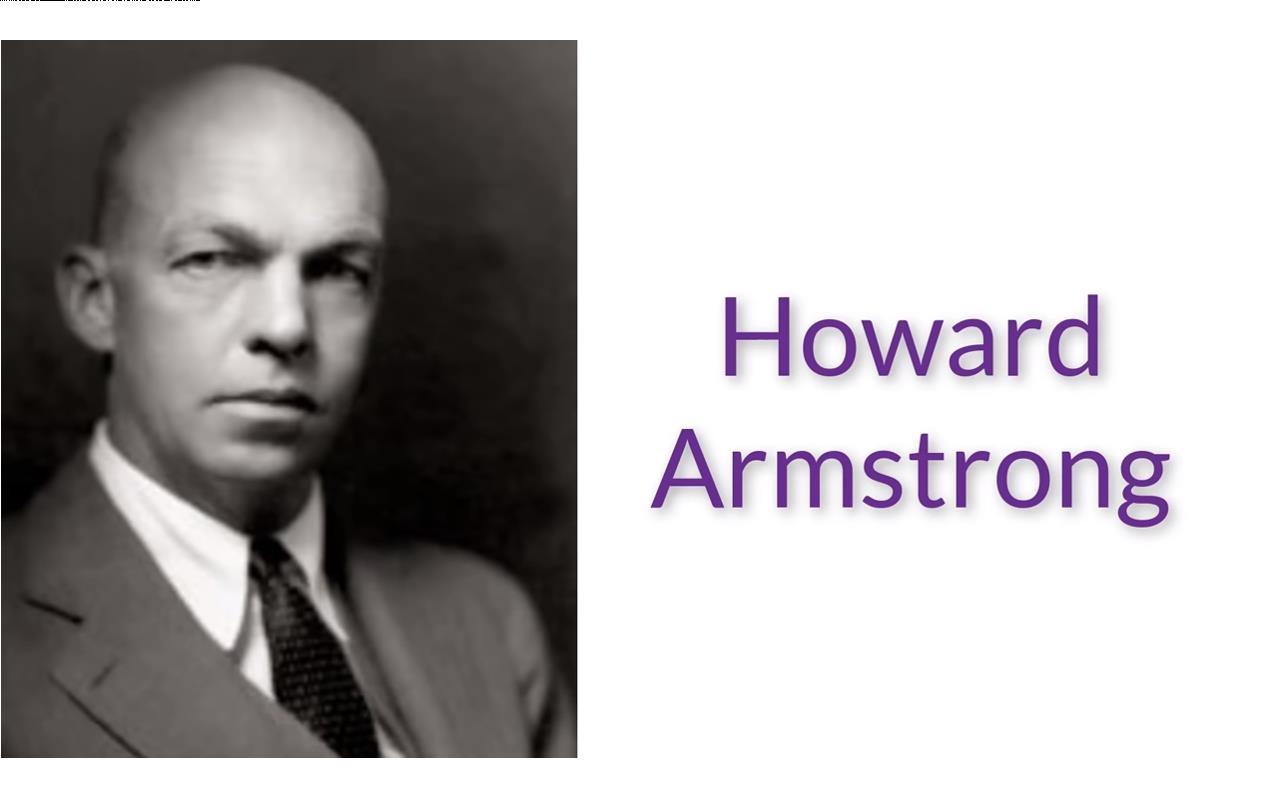
为此他设想先从变化较小的低频开始, 然后利用频率倍增技术将信号变成较高频率,对应的频率变化就会增大。 在接收信号时,接收器允许的带宽要求比较大, 这被称为宽带 FM 收音机。 这的确不是一件容易的事,直到 1933 年Armstrong才把它弄好。

▲ 图1.2.4 接受信号的带宽
当他实现了他的设想之后,发现广播声音的质量比他希望的还要好。 杂波干扰消失了。 调频信号的频率范围可以覆盖人类耳朵可以听到的整个频率范围,而不是像 调幅广播那样只有一小段声音频率范围。 甚至可以同时传输两个信号来传输立体声。 可是谁能想到,调频广播的这种高保真特性,却招来萨尔诺夫的讨厌。
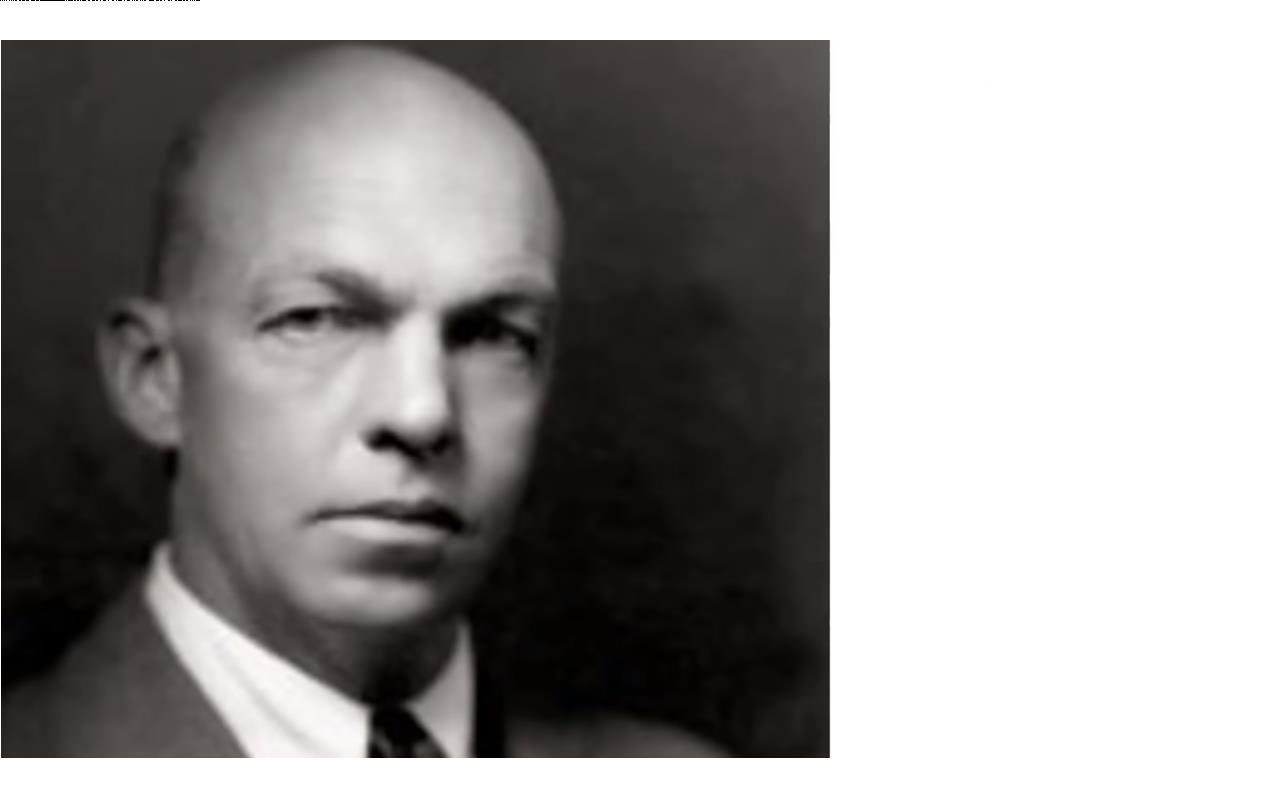
下面通过实验对比AM, FM对干扰的抑制作用。
三、调频调制
你可能会问,如何将来自麦克风的信号变为无线电波频率的变化? 这个调频过程稍微复杂一点。 阿姆斯特朗先对极低频的载波进行幅度调制,接着将原来的载波进行抑制。 接着将调制信号移相90 度, 这就产生 PM 或相位调制信号。 调制信号的幅度不会改变,而是改变了信号的相位,也就是信号的过零点的位置。 然后再使用一个电容器对信号进行积分,使其成为调频信号。 最后,使用正弦载波信号与调制信号相乘,获得无线电波信号,改信号具有载波频率和频率变化。
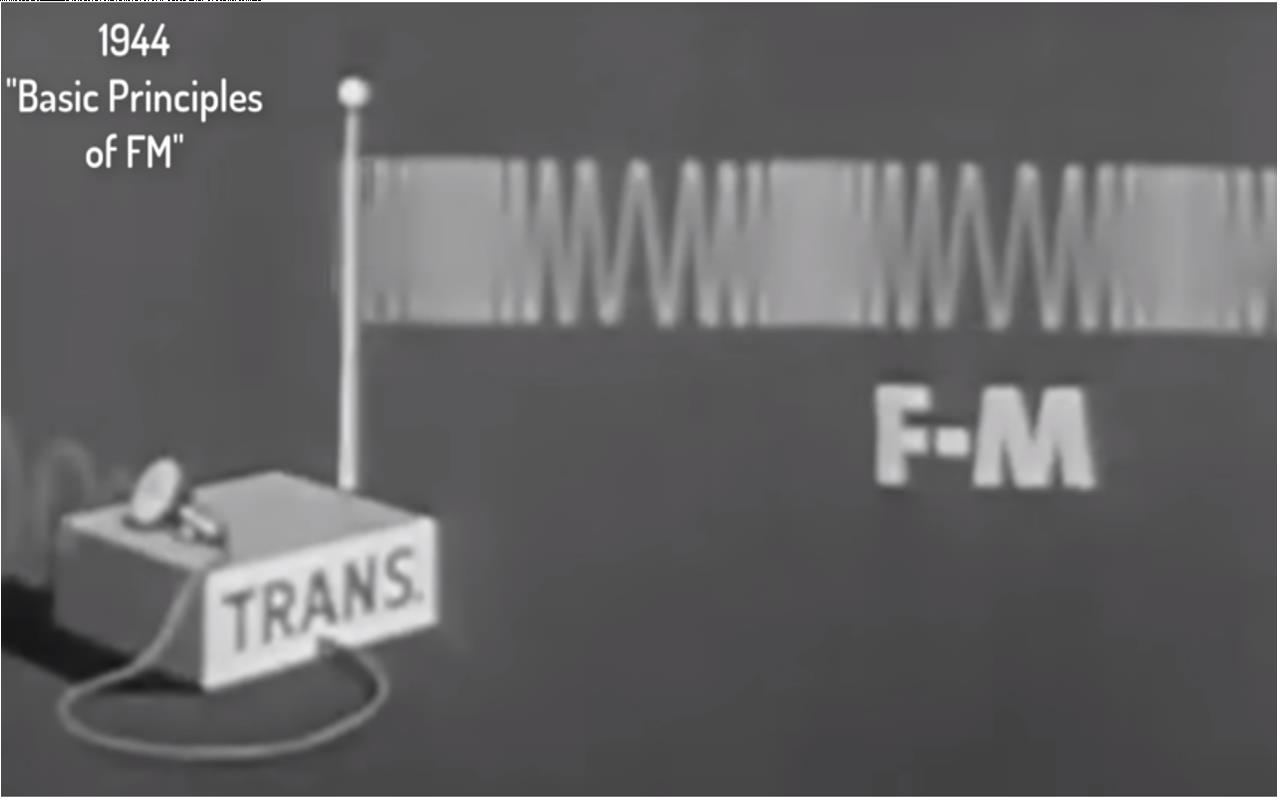
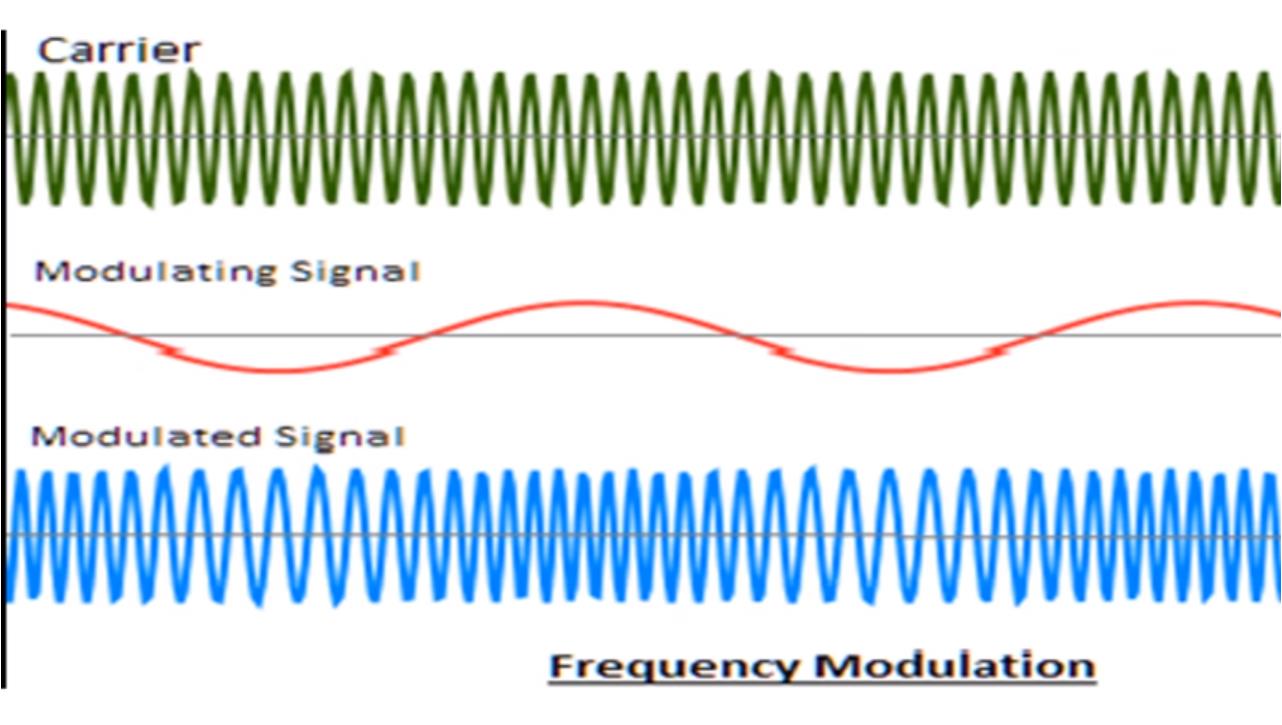
▲ 图1.3.1 信号频率调制过程
四、调频解调
那么如何解调FM信号呢? 要谈论 FM 接收器,让我们先从 Armstrong 的 AM 接收器如何工作开始。 AM收音机中,Armstrong 放大了来自天线的信号,然后将其与另一个信号混合以产生易于处理的较低的中频信号。 然后将通过滤波选择想要的频率信号。放大该信号,然后对其进行幅度包络检波。顺便说一下,可以使用简单的二极管实现信号包络线检波。 最后将声音进行功率放大,输出到扬声器上。
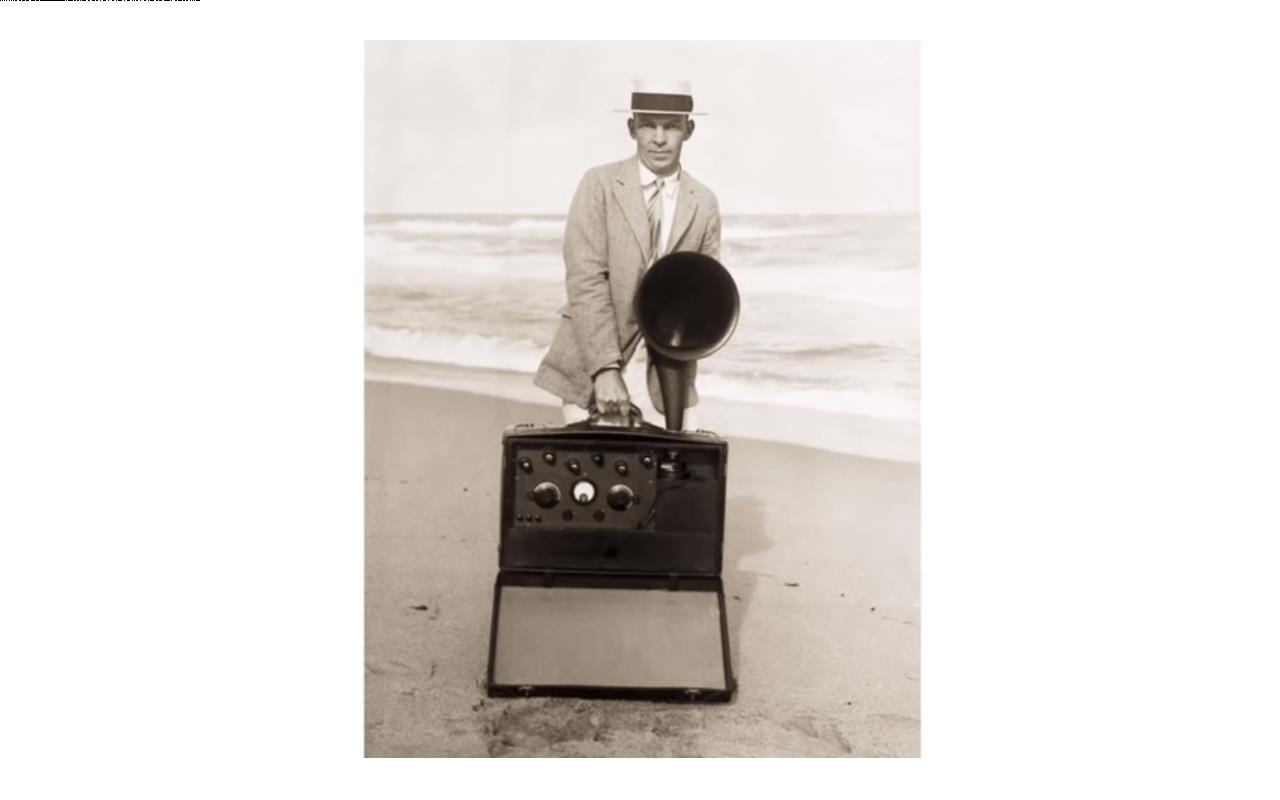
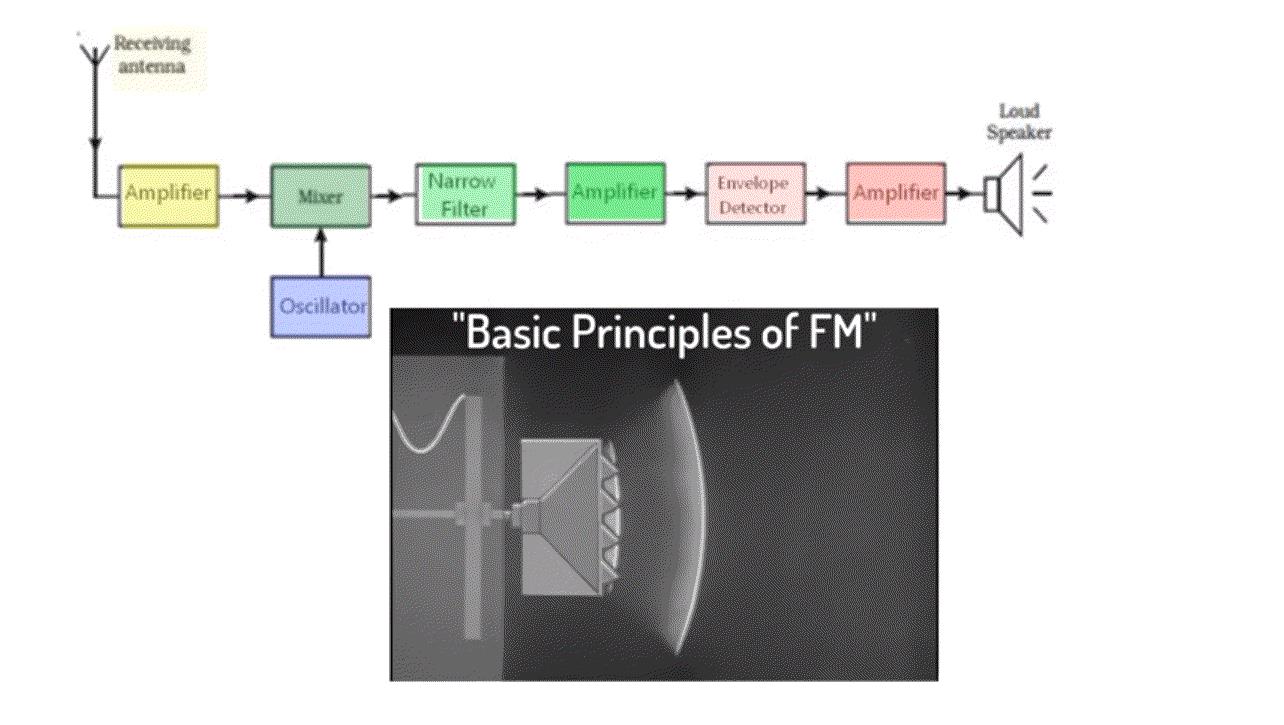
▲ 图1.4.1 AM信号解调
FM 接收器与 AM 接收器略有不同。 在FM接受器中不需要窄频滤波器,否则就会丢失调制信号信息,取而代之的是宽频滤波器。 其次,中间具有限制器的电路,限制信号的幅度 。如果波形超过限制阈值,任何信号变化都被削顶。 因为信号是调制在频率变化上,所以附加在幅度上的干扰杂波就会被滤除。 第三,检波部分不再使用包络检测器,而是使用了鉴频器电路, 正如阿姆斯特朗所说,鉴频器的作用是“将频率变化转化为幅度变化”。
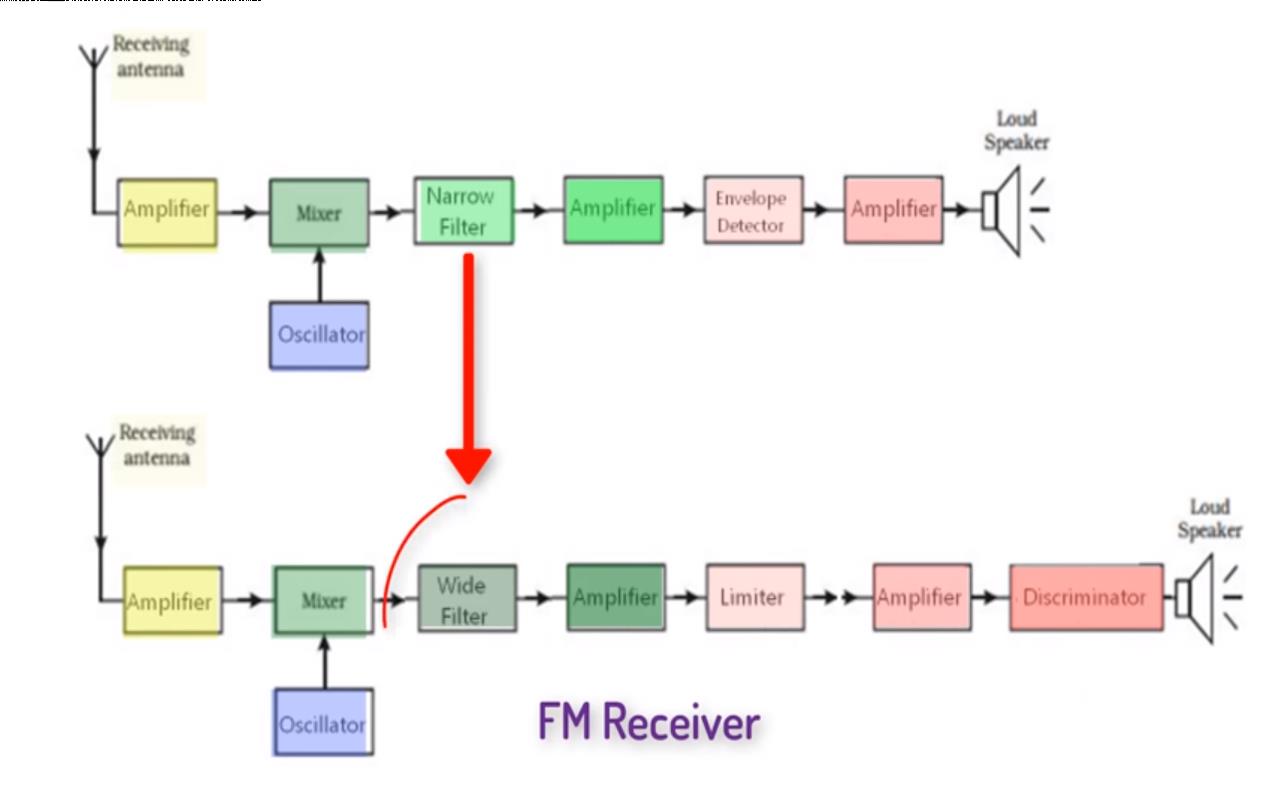

▲ 图1.4.2 FM接收机中的限幅器
Armstrong 用线圈和电容器创建了两个调谐电路。 一个调谐到载波频率以上, 一个调谐到载波频率以下。 如果输入信号没有被调制,也就他与载波频率相同,那么在两个电路中效果都一样。 然后标记为 48 和 49 的两个线圈将感应出相同的电压,它们之间没有电流输出。
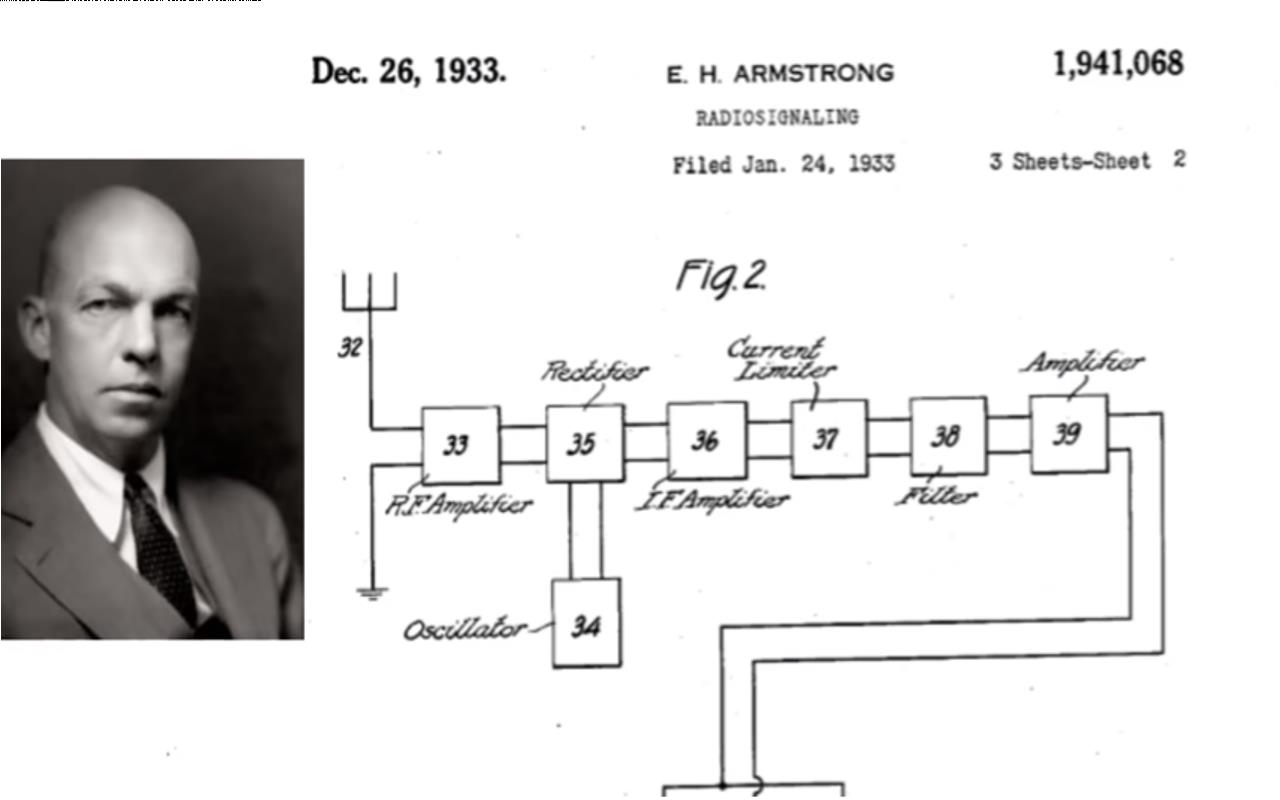
然而,如果频率被调制得更高或更低,那么一个谐振回路输出信号幅度高, 另外一个谐振回路幅值低。 两个谐振回路输出信号肤质不同,使得在它们之间产生电压差,并在扬声器或耳机中产生相应的电流。 频率差越大,耳机中电流的幅度就越大。 通过这种方式,阿姆斯特朗将频率的变化转换为扬声器振幅的变化。
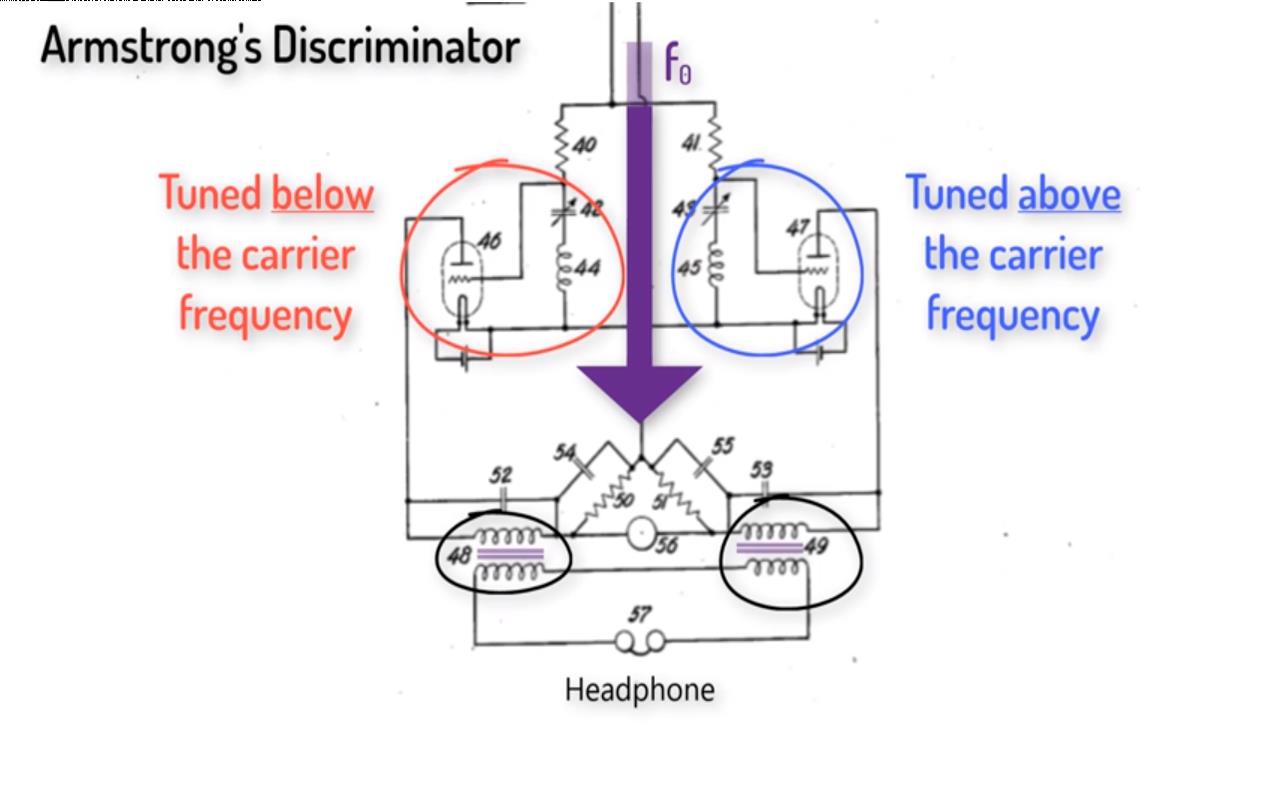
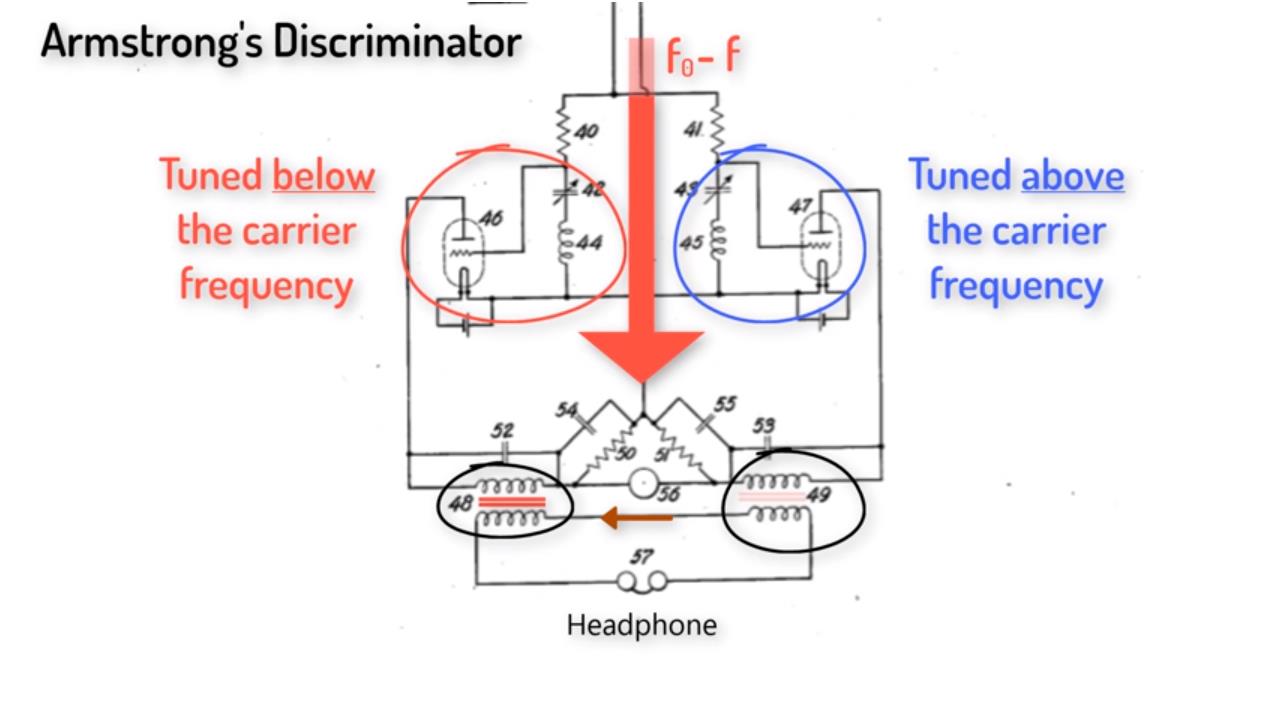
▲ 图1.4.3 FM收音机中的鉴频器
五、商业之争
既然 FM 比 AM 好那么多,为什么 Sarnoff 不高兴呢? 按照萨诺夫的想法,他只希望有什么东西可以改进现有的调幅广播系统,而不是取代他的系统。 那该怎么办呀? Sarnoff 决定阻止他朋友ArmStrong的新发明的推广。 他不仅将阿姆斯特朗赶出帝国大厦的实验室,还让其他的科学家写文章诋毁 FM,并禁止 RCA 使用 FM 收音机。 但阿姆斯特朗并没有气馁,他卖掉了他在 RCA 的所有股票,并创办了自己的 FM 公司,名为 Yankee Network。

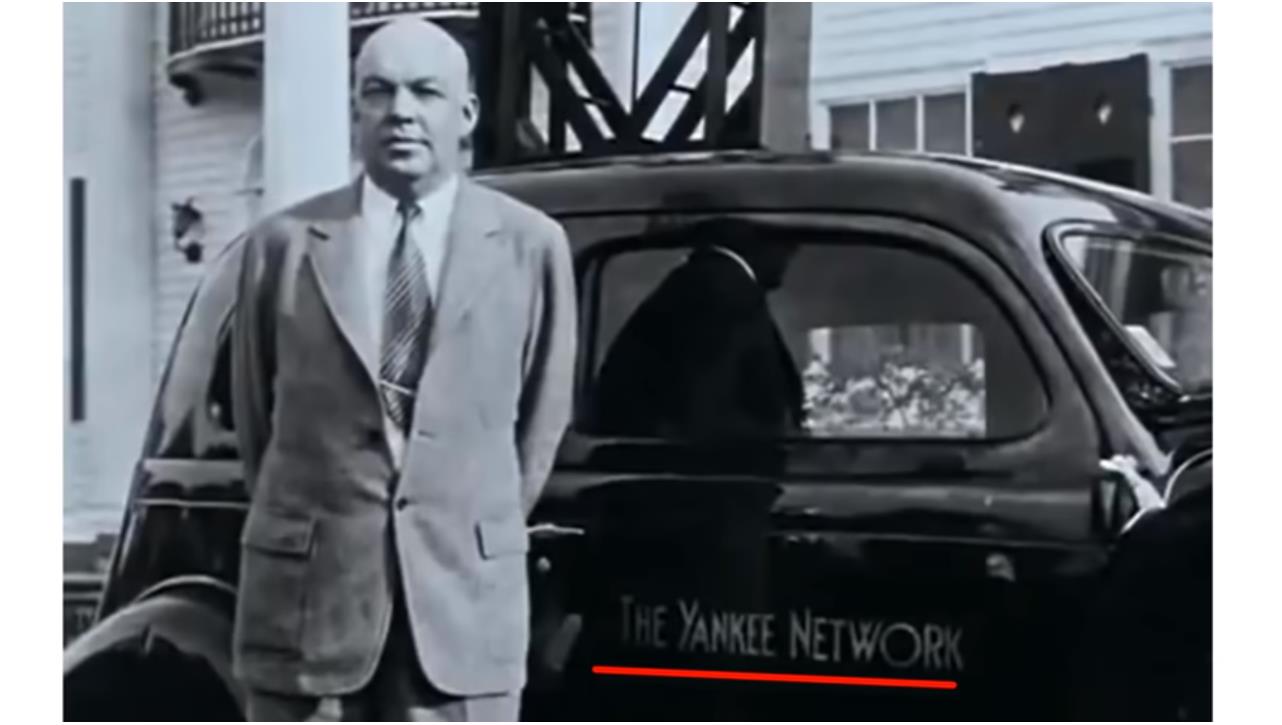
▲ 图1.5.1 阿姆斯特朗的调频广播公司
直到五年后,萨尔诺夫才意识到自己可能错失了调频广播重要商机, 并试图让阿姆斯特朗签署价值一百万美元的非排他性许可。 阿姆斯特朗不客气的让让萨尔诺夫滚开, 阿姆斯特朗的这种不合作态度让他的律师大为吃惊, 他说:“这是我第一次听说发明家为了非排他性许可而拒绝了 100 万美元。”
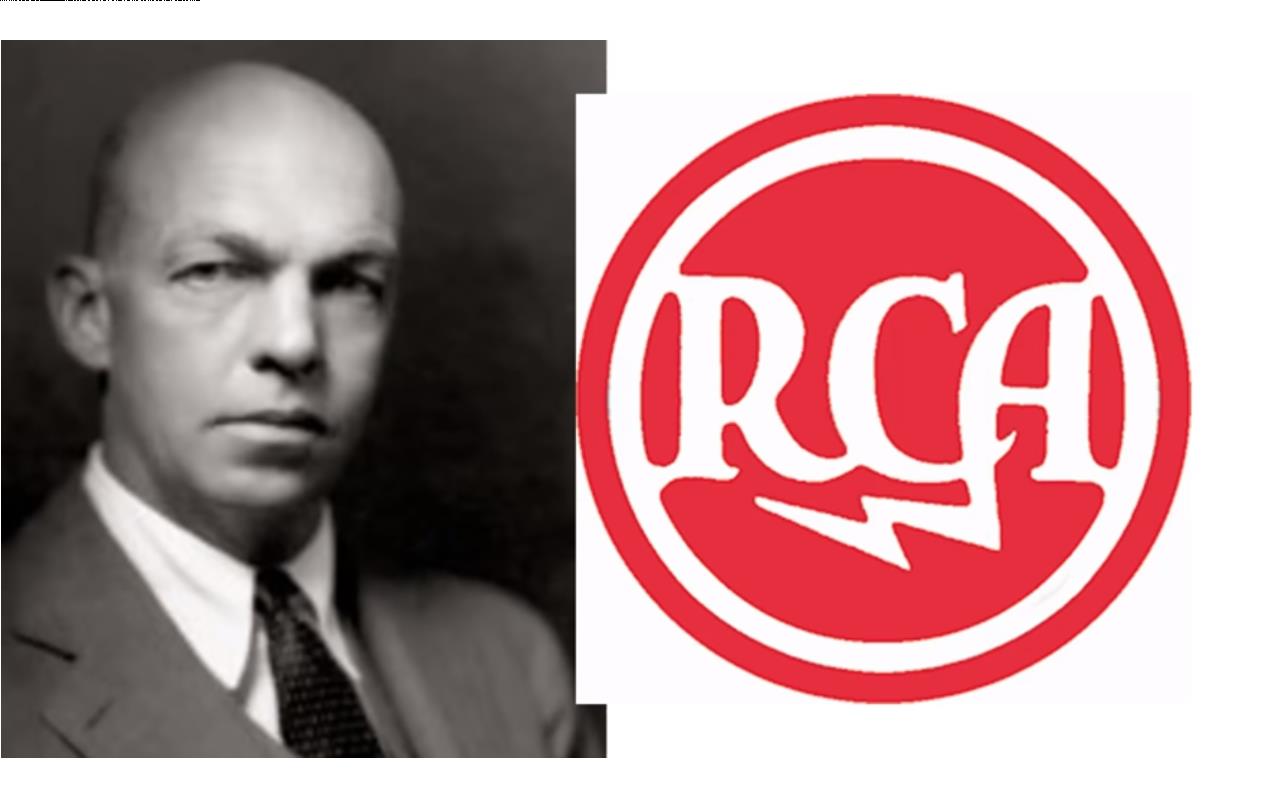
萨尔诺夫被彻底激怒了。 于是他与他的前朋友开始了个人恩怨争斗,并利用他的影响力让 FCC 改变了 FM 可用的无线电频率, 使阿姆斯特朗的设备和公司变得一文不值。 Sarnoff 和 RCA 随后在未经许可的情况下开始使用 FM, 很快许多其他公司也纷纷效仿。 1948 年 7 月,阿姆斯特朗提起诉讼。 RCA 决定通过使诉讼尽可能漫长和艰巨来赢得胜利。 或者正如阿姆斯特朗所说,“他们会拖延这件事,直到我死了或破产。” 而这场官司一拖再拖。 阿姆斯特朗的官司持续了好几年。 1952 年,他的钱花光了,不得不贷款支付律师费。 1953 年 2 月 20 日,Sarnoff 在法庭作证时撒谎说“RCA 在开发 FM 方面所做的工作比这个国家的任何人都多,包括阿姆斯特朗”。
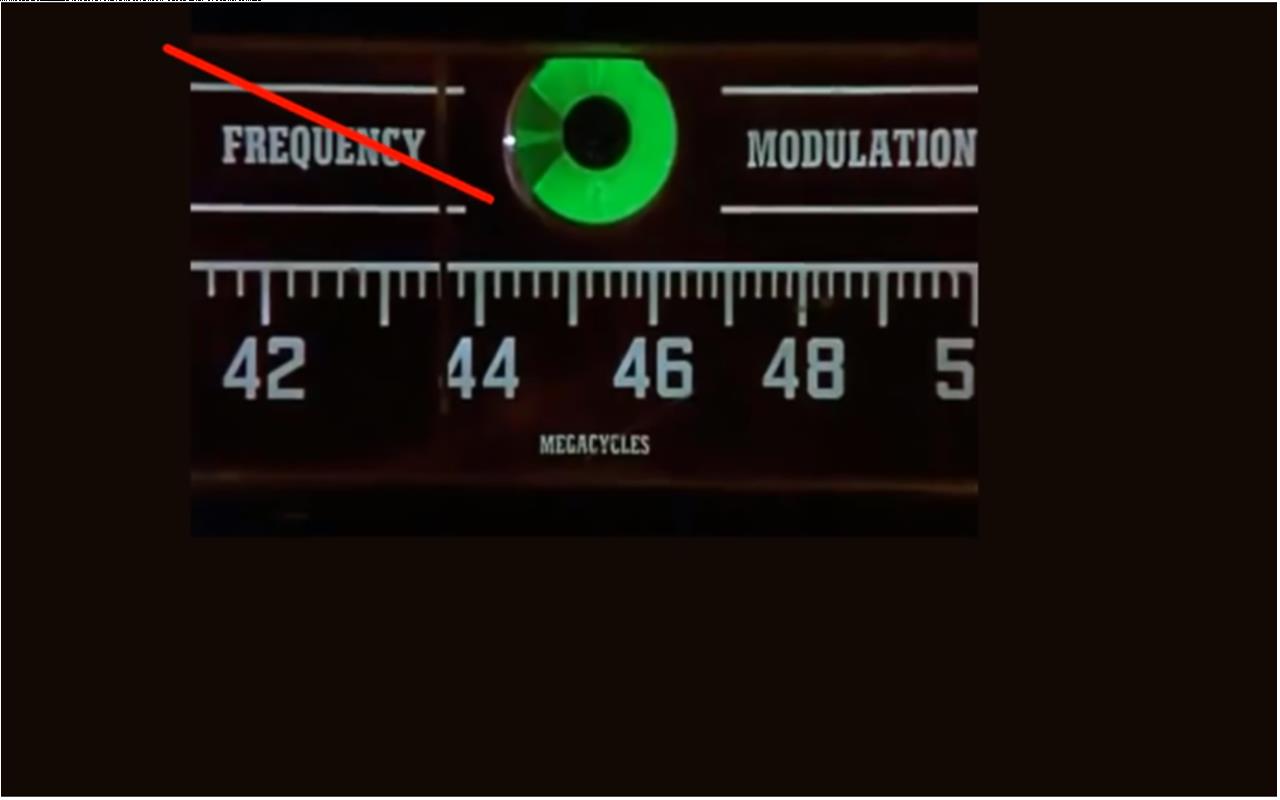
失败后,阿姆斯特朗试图息事宁人,但萨尔诺夫不让他这么做。 1953 年 11 月,阿姆斯特朗向他的妻子玛丽恩说明财务状况, 他们之间产生了口角, 直至动起手来。失去理智的阿姆斯特朗用纸牌打了妻子的胳膊, 气愤的玛丽恩离家出走,再也没有回来看望她的丈夫。 1954 年 1 月 31 日,正好是阿姆斯特朗与萨尔诺夫当年一起熬夜展示他的再生电路的 40 年周年纪念日, 阿姆斯特朗给妻子写了一封道歉信,接着从他公寓的窗户上取下空调,随后从 13 层楼跳下身亡。 他 63 岁。
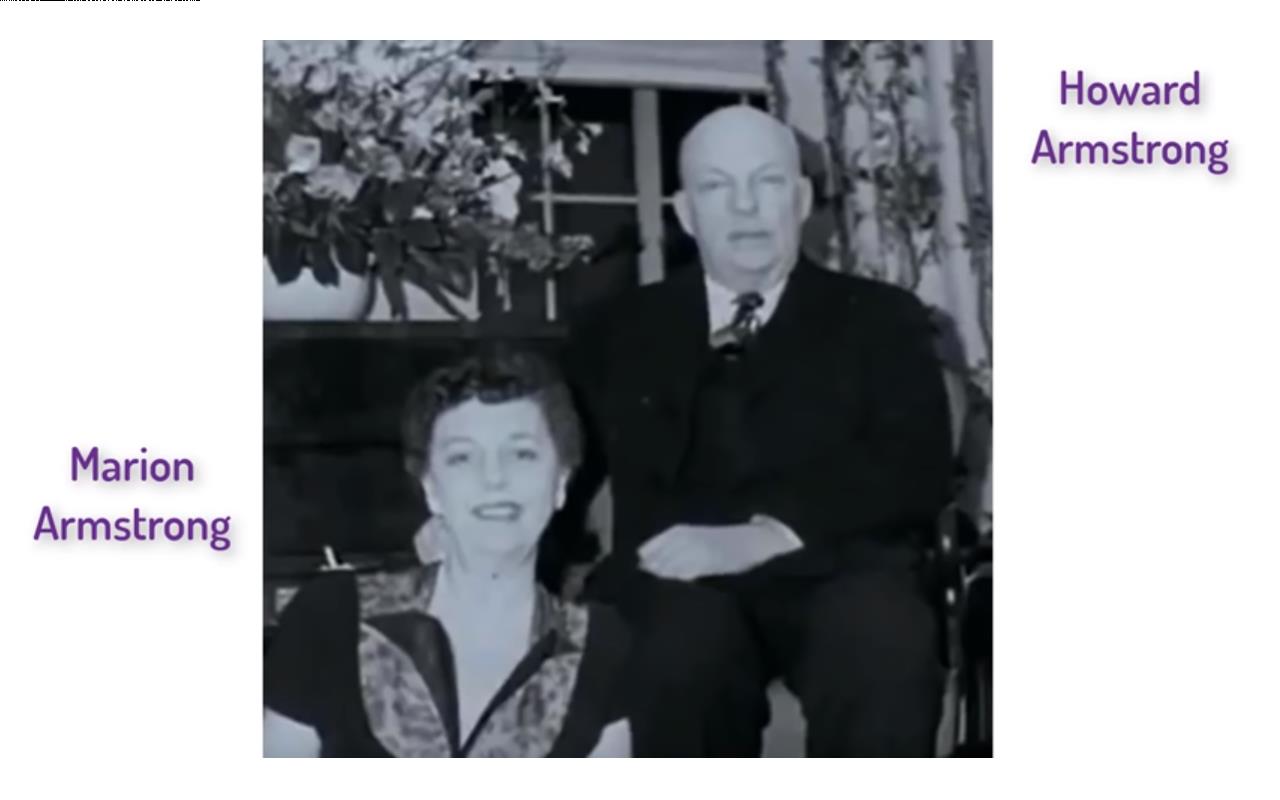
当大卫萨尔诺夫听说阿姆斯特朗自杀时,他脱口而出“我没有杀阿姆斯特朗。” 但他一定知道他与阿姆斯特朗的绝望行为有关,并在他的葬礼上公开痛哭流涕。 Marion Armstrong 继续她丈夫的所有诉讼。 最终她将提起 21 项专利诉讼并全部获胜。 在接下来的 11 年里,她赢得了超过 1000 万美元的赔偿金。
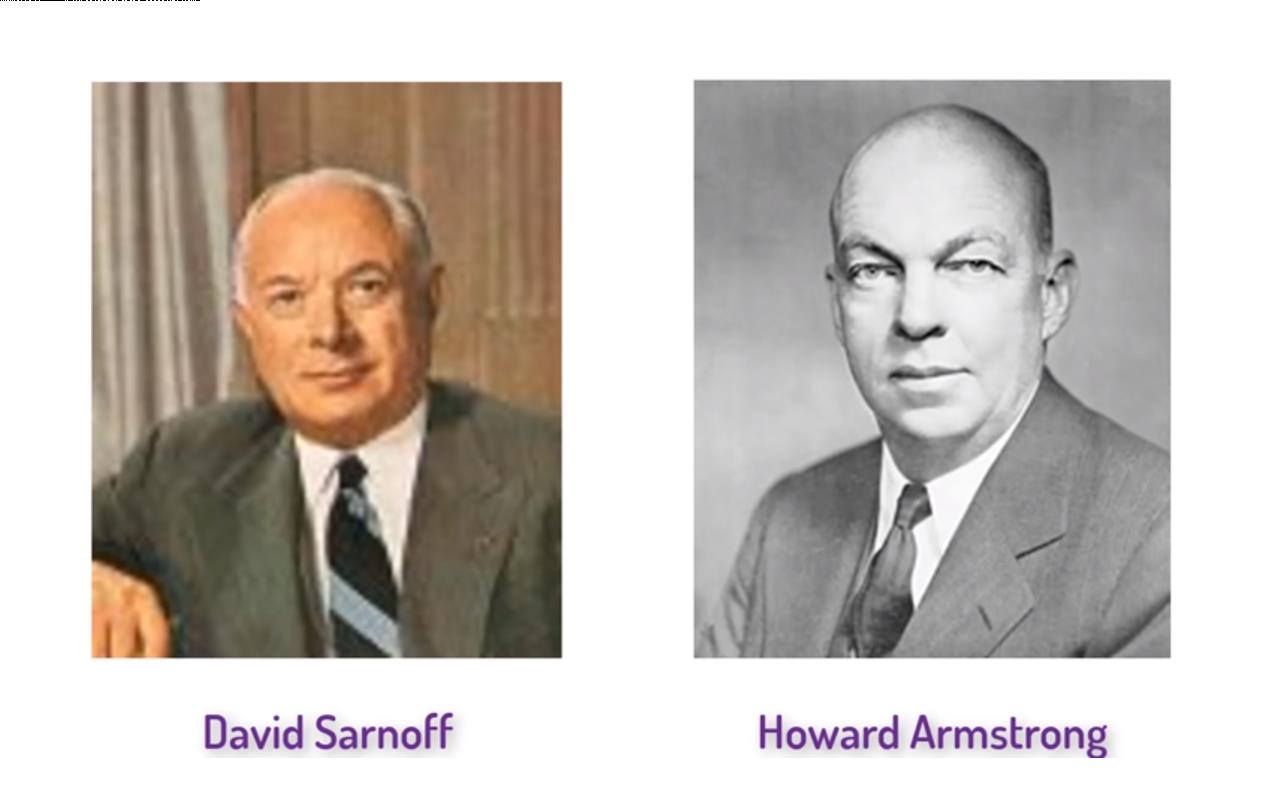
让我们稍微回到 1934 年。 David Sarnoff 干嘛不想用 FM 取代他的系统呢? 其中部分原因是他手头拮据,因为他已经投入 500 万美元来研发一个叫做阴极射线管的产品。 这个产品最终成就 Sarnoff 和 RCA 成为 CRT 电视巨头的原因。

六、后记
但什么是阴极射线管? 为什么发明它? 它不仅仅与电视有关,还与示波器、雷达、X 光机、电子的发现和光电效应有关。 这中间的故事我们下次接着聊。
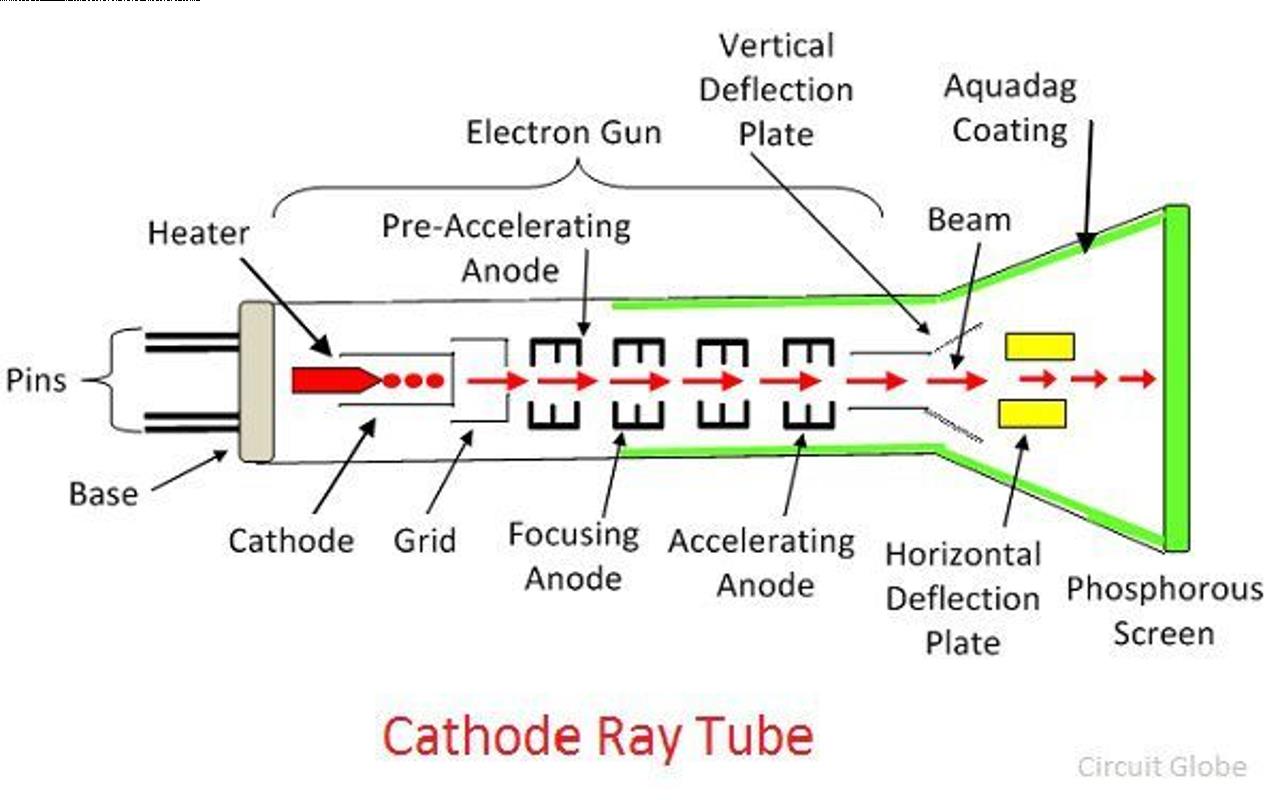

▲ 图1.6.1 阴极射线管电视机
02 英文稿件
一、前言
Frequency modulation or FM radio changed the way we communicate. It was according to Howard Armstrong’s eventual nemesis David Sarnoff, “A revolution”. I’ve seen books and videos and articles about this history but they always skim over the science. This is my attempt to tell an accurate but clear and simple description of how Howard Armstrong invented FM radio in the first place and how it was so amazing that it led to his destruction. Ready? Let’s go. ♪ Electricity ♪ ♪ Electricity ♪ ♪ Electricity ♪ ♪ Electricity ♪ -
二、从调幅到调频
In 1923, Howard Armstrong worked with his friend, David Sarnoff, then the vice president of RCA to make the Radiola radio and soon Armstrong and Sarnoff made millions of dollars and broadcast radio took over the culture. There was only one problem, static, and it had to do with the nature of AM radio.
Let’s start with some basics. Radio waves aren’t sound waves. I know crazy, right? They’re actually invisible light waves. Radio waves are used as the medium that is used to transmit or carry the sound information. In AM radio sound is converted into an electrical signal and that signal is used to change the height or the amplitude of the wave. Thus the name AM radio for amplitude modulation. However, every time there is a spark, it makes a radio wave which increases the amplitude of the wave which creates static in AM radio. (upbeat music) (static)
Sarnoff had repeatedly said that he wished he had a little black box to get rid of static and Howard Armstrong thought he had the solution. Why not create a radio wave where the amount the frequency deviated from the original more squished or stretched, corresponded to the sound wave produced in the microphone instead of changing the height. For this reason it is called FM radio for frequency modulation.
Actually many scientists were interested in using frequency modulation in the late teens and early twenties. However, in 1922, John Carson, the head mathematical theoretician at Bell Laboratories wrote a paper that it wouldn’t work. Well to be more accurate, he said it would work, but it inherently distorts without any compensating advantages whatsoever. Carson eventually concluded that quote “Static, like the poor will always be with us.”
Now, Armstrong was even more determined saying, quote “I could never accept findings based almost exclusively on mathematics.” In 1928 Howard Armstrong decided to spend all of his time trying to make FM radio. For three years, he got nowhere. Then he had a radical idea. He knew that in order to make FM radio, you by necessity had to change the frequency. He also knew that with the technology available at the time he needed to keep that fluctuation to a minimum or it distorted the signal, as Carson mathematically proved. But then it was impossible to have the full range of sound and to reduce static.
What if, he thought, you started with a low frequency with small changes and then multiplied it to a higher frequency with large changes and made the receiver only receptive to large changes. This is called broadband FM radio and it was not an easy task and it took him till 1933 for him to get it right.
But when he did it worked even better than he had hoped. The static was gone. (static) (upbeat music) You could transmit the whole range of human hearing instead of a small range like AM. You could even transmit two signals at the same time to make surround sound. And Sarnoff hated it.
三、调频调制
You might ask how can a signal from a microphone be changed into variations of the frequency of the wave? Well, it’s a little confusing but Armstrong started with creating an AM signal on a very low frequency radio wave. He then suppressed the original smooth radio wave and re-installed it, 90 degrees out of phase. This creates a PM or phase modulation. So instead of the signal changing the height of the wave, it changes the phase of the wave or where the wave stuck. He then used a capacitor to smooth out or integrate the system and make it into an FM signal. Finally, he used harmonics to multiply the signal to get to the carrier frequency and frequency variations that he wanted.
How about the receiver? Well, to talk about an FM receiver let’s start with how Armstrong’s AM receiver worked first. With AM, Armstrong amplified the signal from an antenna and then mixed it with another signal to create a lower intermediate signal that was easier to deal with. He then filtered it to his desired frequency, amplified that signal and then used electronics to detect the changes in amplitude.
By the way, this envelope detector could be as simple as a one-way valve. Finally, he amplified the sound and projected it onto a loudspeaker.
四、调频解调
The FM receiver was only slightly different than the AM receiver. First with FM, you don’t want a narrow frequency filter or you cut out all your information. So he used a broad frequency filter. Second, he used something he called a limiter, because it limited the height of the wave. Basically it saturated the system so that any variation in the height of the waves was cut off. Since the real signal was in the variation of the frequency and the variation in the height was only due to static anyway. Third, instead of an envelope detector Armstrong used something he called a discriminator that would, as Armstrong put it, quote, “Translate variations in frequency into variations in amplitude.”
Armstrong created two tune circuits with coils and capacitor. One tuned to above the carrier frequency and one tuned to below the carrier frequency. If a wave was created with no modulation that would work equally badly in both circuits. Then the two coils labeled 48 and 49 would get the same voltage induced in them which would cause no current to flow between them.
However, if the frequency was modulated higher or lower then one circuit would resonate better and at a higher amplitude and the other would resonate worse with a lower amplitude. This would cause one coil to have higher voltage induced than the other coil, which would create a current between them and correspondingly current in the speaker or headphones. The bigger the frequency difference, the bigger the amplitude of the current in the headphones. In this way Armstrong converted changes in frequency to changes in amplitude in the speaker.
五、商业之争
Whew. So if FM was so much better than AM why wasn’t Sarnoff happy? Well Sarnoff was hoping for something to improve his system not something to supplant his system. What to do? Sarnoff decided to crush his friend’s new invention. Kicked Armstrong out of his laboratory in the Empire State Building, had his scientists write articles denigrating FM, and forbade RCA from using FM radio. Undeterred Armstrong sold all his stock in RCA and started his own FM company called the Yankee Network.
It wasn’t until five years later the Sarnoff realized his mistake and tried to get Armstrong to sign a million dollars worth of a non exclusionary license. Armstrong told Sarnoff to get lost. Armstrong’s lawyer thought his client was crazy. Quote, “That’s the first time I ever heard of an inventor turning down a million for a non exclusionary license.”
Sarnoff was incensed. He started a personal war with his former friend and used his influence to have the FCC change the radio frequencies available for FM, making Armstrong’s equipment and company worthless. Sarnoff and RCA then started using FM without permission and soon many other companies followed suit. In July of 1948, Armstrong sued. RCA decided to win by making the lawsuit as long and arduous as possible. Or as Armstrong said, quote, “They will stall this thing until I’m dead or broke.” And this lawsuit dragged on and on. Armstrong’s deposition lasted a full year. In 1952 he ran out of money and had to have loans to pay his lawyers. On February 20th, 1953, Sarnoff lied under oath that quote “RCA has done more to develop FM than anyone in this country, including Armstrong”.
Defeated, Armstrong tried to settle, but Sarnoff wouldn’t let him. In November of 1953, Armstrong admitted the state of his finances to his wife, Marion. They had a horrible fight and Armstrong hit her arm with a poker. Marion fled the house never to see her husband again. On January 31st, 1954, exactly 40 years after Armstrong stayed up all night with Sarnoff demonstrating his regenerative circuit. A date they celebrated for decades. Armstrong wrote his wife an apology, removed the air conditioner from his apartment window and jumped 13 floors to his death. He was 63 years old.
When David Sarnoff heard of Armstrong’s suicide he blurted “I didn’t kill Armstrong.” But he must have known he had a hand in Armstrong’s desperate act and wept openly at his funeral. Marion Armstrong continued all of her husband’s lawsuits. Eventually she would file 21 patent lawsuits and win all of them. She won over $10 million in damages over the next 11 years.
Let’s go back to 1934 for a bit. Part of the reason that David Sarnoff did not want to supplant his system with FM is because he was cash poor because he had already poured $5 million into controlling a strange item called a cathode ray tube. This is why Sarnoff and RCA eventually became the titans of CRT television.
六、后记
But what is the cathode ray tube? Why was it invented? And what’s its connection, to not only television but also the oscilloscope, radar, x-ray machines, the discovery of the electron and the photo electric effect. Well, that starts next time on The Secret History of Electricity.
■ 相关文献链接:
● 相关图表链接:
- 图1.1.1 戴维·萨尔诺夫与霍华德·阿姆斯特朗
- 图1.2.1 无线广播中的电磁波
- 图1.2.2 调幅收音机被附近电火花干扰
- 图1.2.3 两种种不同的信号调制方式
- 图1.2.4 接受信号的带宽
- 图1.3.1 信号频率调制过程
- 图1.4.1 AM信号解调
- 图1.4.2 FM接收机中的限幅器
- 图1.4.3 FM收音机中的鉴频器
- 图1.5.1 阿姆斯特朗的调频广播公司
- 图1.6.1 阴极射线管电视机
以上是关于调频广播如何发明的?的主要内容,如果未能解决你的问题,请参考以下文章

